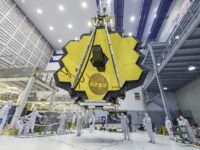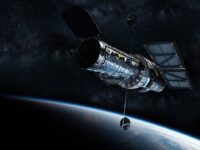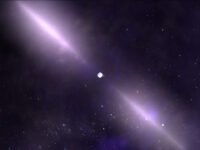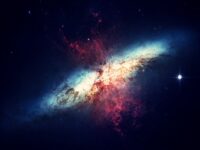In the beginning, all that would become the universe was concentrated into an extremely small, dense, high-energy speck of space. In the fractions of seconds that followed, this singularity exploded: one hundred decillionths (10–35) of a second after, it expanded to nearly the size of a soccer ball; after one nonillionth (10–30) of a second, it reached the width of a city block. 13.8 billion years later, the universe stretches perhaps to infinity, and the expansion that characterized its explosive origin is still stretching it apart.
But how fast is this expansion? It turns out that finding this value is much trickier than expected, and differing results are causing scientists to question our understanding of the physics of the universe.
One way to measure expansion is to look at “standard candles,” objects with luminosities so well-known that we can measure their distance from Earth by how much dimmer they are than we expect. Scientists divide the speed with which these objects are being pulled away from us — measured using their redshift, or how much their light gets stretched out as they recede — by the object’s distance from the observer. This relation, velocity over distance, calculates the Hubble Constant, a famous parameter in cosmology that describes universal expansion.
Cosmologists made very precise measurements of the cosmic microwave background (CMB), the electromagnetic afterglow of the beginning of the universe.
The Hubble Constant, or H0, has been measured using a second method to verify these results. Cosmologists made very precise measurements of the cosmic microwave background (CMB), the electromagnetic afterglow of the beginning of the universe. This faint wash of radiation left over from the Big Bang provides a snapshot of what the Universe looked like millions of years (mere moments in cosmic time) after it was born. Telescopes like Planck and WMAP have created detailed maps of the CMB that have allowed cosmologists to determine the exact characteristics of the universe, such as temperature and composition. Cosmologists then plug these values into physical models that include all the parameters we have to describe the Universe — including H0 — and tweak the knobs until the predictions of what the CMB should look like match observations.
There’s only one small problem — these methods produce very different results.
Redshift measurements taken with the Hubble Space Telescope (HST) in 2019 place H0 at 74.03 (km/s)/Mpc. (These weird units give the speed of a galaxy one megaparsec or ten quintillion kilometers away). Measurements of the CMB taken with the Planck telescope arrive at a value of 67.66 (km/s)/Mpc. This disagreement may seem small, but it amounts to a 4.4σ or 99.9989174912% discrepancy. This means there’s less than a 1 in 100,000 chance that this discrepancy is a fluke — and further physics research depends on this tension being resolved.
One theory that might resolve this tension challenges our understanding of cosmic distance. To calibrate redshift measurements of Type Ia supernovae, a type of standard candle that are some of the farthest, oldest, and most quickly receding targets, astronomers have to use a closer standard candle for reference. In this case Cepheid variables are used, which are stars that pulse with clock-like dependability. To calibrate these distances, even closer standard candles are used. Astronomers continue to step down the “cosmic distance ladder” until they have solid estimates of distance. But if one rung is broken, then the whole structure — and all the science that relies on it — will come toppling down.
If one rung of the cosmic distance ladder is broken, then the whole structure — and all the science that relies on it — will come toppling down.
An even more concerning possibility is that our physics is wrong. Values derived from detailed maps of the CMB are used to make physical predictions of what the Universe should look like — predictions which rely on our current understanding of physics. We rely on a physics model called Lambda-CDM (where CDM stands for cold dark matter and Lambda represents the cosmological constant, which describes how quickly the rate of cosmic expansion is changing). If this model is incomplete, even by some small amount, then predictions produced by the model are incomplete as well.
This profound disagreement over one of the most fundamental characteristics of the universe is troubling. Either methods we have trusted and used to do science for decades is wrong, invalidating enormous swaths of results, or there is mysterious new physics that we have not yet seen. Until the Hubble tension is resolved, cosmology will continue to be pulled apart.
DOI: arXiv:1807.06209v2
DOI: arXiv:1903.07603v2






